计算物理 ›› 2025, Vol. 42 ›› Issue (2): 160-170.DOI: 10.19596/j.cnki.1001-246x.8853
收稿日期:2023-10-26
出版日期:2025-03-25
发布日期:2025-04-08
通讯作者:
任翔
作者简介:陈周纬宇, 男, 硕士研究生, 研究方向为并行数值算法, E-mail: yahoo_con_cn@163.com
基金资助:
Zhouweiyu CHEN1( ), Xiang REN2,*(
), Xiang REN2,*( ), Feizhou ZHANG2, Tongxiang GU2
), Feizhou ZHANG2, Tongxiang GU2
Received:2023-10-26
Online:2025-03-25
Published:2025-04-08
Contact:
Xiang REN
摘要:
采用残差神经网络对来流Ma∞在0.3~0.8范围内球柱型激光转塔模型的稳态流场开展机器学习, 建立此范围内任意来流条件下的亚声速/跨声速流场预测, 并针对不同视场角下的光束波前畸变评估此模型的预估精度。学习模型可再现转塔流动中的边界层、流动分离以及分离剪切层等流动特征, 尤其包括跨声速流动中的非锚定激波间断现象。基于预测流场计算的不同视场角下的波前分布与根据传统计算流体力学(CFD)模拟流场的结果基本一致。该机器学习方法为工程领域中激光转塔气动光学效应自适应校正提供了策略。
陈周纬宇, 任翔, 张飞舟, 谷同祥. 基于残差神经网络的激光转塔气动光学效应快速预测[J]. 计算物理, 2025, 42(2): 160-170.
Zhouweiyu CHEN, Xiang REN, Feizhou ZHANG, Tongxiang GU. Rapid Prediction of Aero-optical Effects of Laser Turret Based on Residual Neural Networks[J]. Chinese Journal of Computational Physics, 2025, 42(2): 160-170.
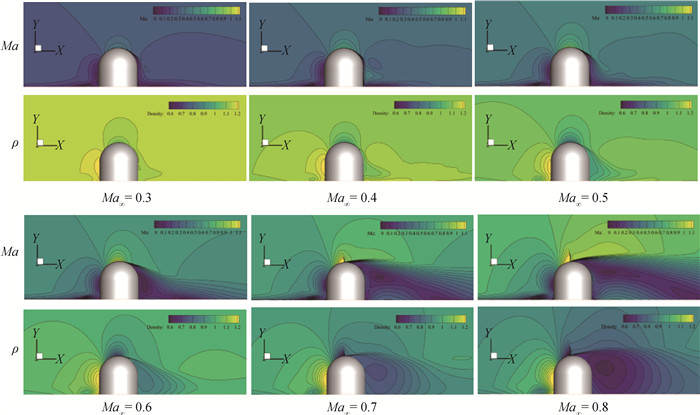
图2 Ma∞=0.3~0.8的部分状态下转塔中心截面上的马赫数和密度分布云图
Fig.2 Mach number and density distribution on center section of turret under partial conditions with Ma∞=0.3~0.8
| 网络 | NN-1 | NN-2 | NN-3 |
| 输入 | (x, y, z, Ma∞, ρ∞) | (x, y, z, Ma∞, ρ∞, SDF) | (x, y, z, Ma∞, ρ∞, SDF) |
| 网络结构 | FC(5, 64) | FC(6, 64) | FC(6, 64) |
| ResBlock(32, 64)×4 | ResBlock(32, 64)×4 | ResBlock(32, 64)×6 | |
| FC(64, 2) | |||
| 输出 | (Ma, ρ) | ||
表1 三种神经网络的具体参数
Table 1 Parameters of three neural networks
| 网络 | NN-1 | NN-2 | NN-3 |
| 输入 | (x, y, z, Ma∞, ρ∞) | (x, y, z, Ma∞, ρ∞, SDF) | (x, y, z, Ma∞, ρ∞, SDF) |
| 网络结构 | FC(5, 64) | FC(6, 64) | FC(6, 64) |
| ResBlock(32, 64)×4 | ResBlock(32, 64)×4 | ResBlock(32, 64)×6 | |
| FC(64, 2) | |||
| 输出 | (Ma, ρ) | ||
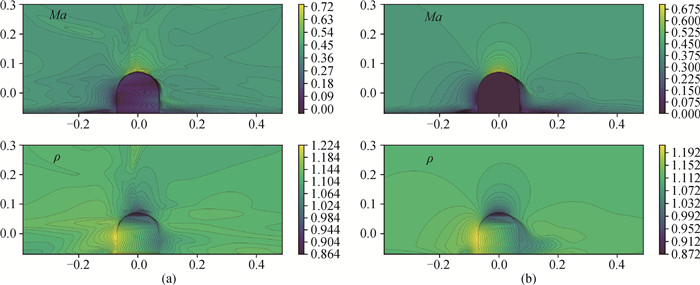
图4 残差神经网络未考虑分场时对来流Ma∞ = 0.42的预测流场和相应CFD的结果(a) 残差网络; (b) CFD
Fig.4 Predicted flow fields for freestream Ma∞=0.42 by residuals neural network without field-specific and CFD (a) residuals neural network; (b) CFD
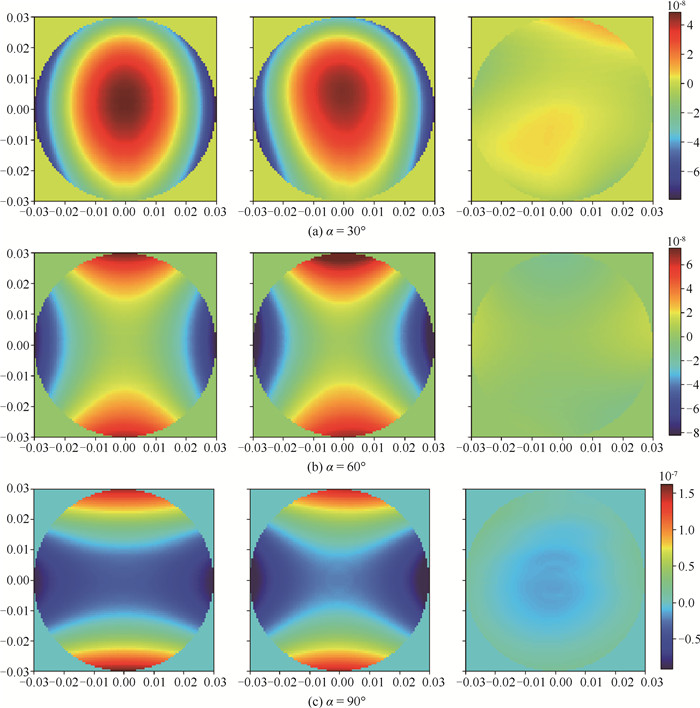
图9 第三种神经网络预测在来流Ma∞=0.42时,视窗角α为(a) 30°、(b) 60°和(c) 90°的波前分布
Fig.9 Wavefront distribution predicted by the third neural network at different α (a) 30°; (b) 60° and (c) 90° with Ma∞=0.42
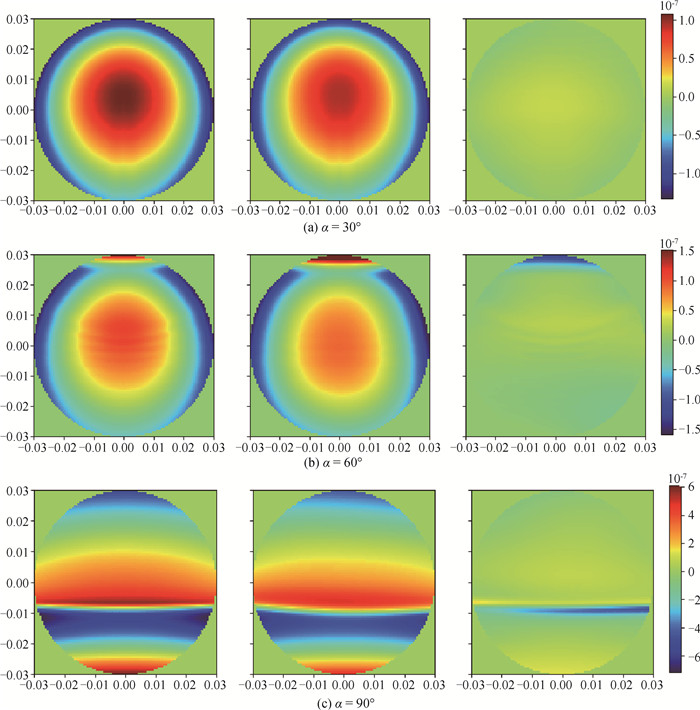
图10 基于第三种神经网络预测在来流Ma∞=0.76时(a)α=30°、(b) 60°和(c) 90°的波前分布
Fig.10 Wavefront distribution of α=30°, 60° and 90° predicted by the third neural networks with freestream flow Ma∞=0.76
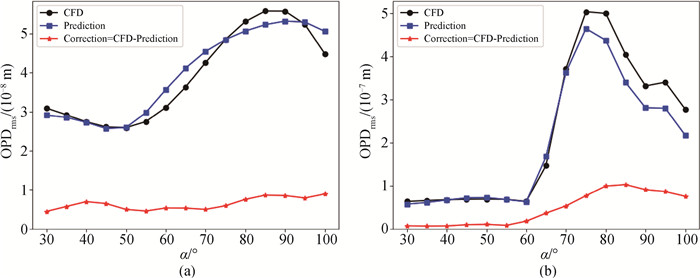
图11 基于第三种神经网络预测的在来流为(a) Ma∞=0.42和(b) Ma∞=0.76时不同视窗角(α=30°~100°) 下波前畸变OPDrms
Fig.11 Wavefront distortion OPDrms predicted by the third neural networks at different viewing window angles (α=30°-100°) with different freestream flows (a) Ma∞=0.42 and (b) Ma∞=0.76
| 1 |
DOI |
| 2 |
DOI |
| 3 |
DOI |
| 4 |
MOLER J L, LAMBERSON S E. Airborne laser (ABL): A legacy and a future for high-energy lasers[C]//Gas and Chemical Lasers and Intense Beam Applications. Bellingham: SPIE, 1998: 99-105.
|
| 5 |
PERRAM G P, MARCINIAK M A, GODA M. High energy laser weapons: Technology overview[C]//Laser Technologies for Defense and Security, Bellingham: SPIE, 2004: 1-25.
|
| 6 |
DOI |
| 7 |
JUMPER E J, GORDEYEV S, CAVALIERI D, et al. Airborne aero-optics laboratory-transonic(AAOL-T)[C]//53rd AIAA Aerospace Sciences Meeting. Kissimmee: American Institute of Aeronautics and Astronautics, 2015: 0675.
|
| 8 |
GORDEYEV S, VOROBIEV A, JUMPER E J, et al. Studies of flow topology around hemisphere at transonic speeds using time-resolved oil flow visualization[C]//54th AIAA Aerospace Sciences Meeting. San Diego: American Institute of Aeronautics and Astronautics, 2016: 1459.
|
| 9 |
DOI |
| 10 |
DOI |
| 11 |
DOI |
| 12 |
DOI |
| 13 |
LADD J, MANI M, BOWER W. Validation of aerodynamic and optical computations for the unsteady flow field about a hemisphere-on-cylinder turret[C]//27th AIAA Applied Aerodynamics Conference. San Antonio: American Institute of Aeronautics and Astronautics, 2009: 4118.
|
| 14 |
DOI |
| 15 |
DOI |
| 16 |
COIRIER W J, WHITELEY M, GOORSKEY D J, et al. Aero-optical evaluation of notional turrets in subsonic, transonic and supersonic regimes[C]//45th AIAA Plasma dynamics and Lasers Conference. Atlanta: American Institute of Aeronautics and Astronautics, 2014: 2355.
|
| 17 |
|
| 18 |
LUCCA N D, GORDEYEV S, MORRIDA J J, et al. Modal analysis of the surface pressure field around a hemispherical turret using pressure sensitive paint[C]//2018 AIAA Aerospace Sciences Meeting. Kissimmee: American Institute of Aeronautics and Astronautics, 2018: 0932.
|
| 19 |
|
| 20 |
DOI |
| 21 |
YNAG Yuting, JIAO Licheng, LIU Xu, et al. Transformers meet visual learning understanding: A comprehensive review[EB/OL]. [2022-03-04]. https://arxiv.org/abs/2203.12944.
|
| 22 |
DOI |
| 23 |
张庆福, 姚军, 黄朝琴, 等. 裂缝性介质多尺度深度学习模型[J]. 计算物理, 2019, 36 (6): 665- 672.
DOI |
| 24 |
郑书昱, 彭佳臻, 张先梅, 等. 基于神经网络的托卡马克能量约束时间预测[J]. 计算物理, 2021, 38 (4): 423- 430.
DOI |
| 25 |
吴国正, 王发杰, 程隋福, 等. 基于物理信息神经网络的内部声场正反问题数值计算[J]. 计算物理, 2022, 39 (6): 687- 698.
DOI |
| 26 |
梁炜光, 桑建兵, 田红艳, 等. 基于数据驱动管道流体湍流模型的系数修正及流动特性分析[J]. 计算物理, 2023, 40 (1): 57- 66.
DOI |
| 27 |
DOI |
| 28 |
|
| 29 |
DOI |
| 30 |
DOI |
| 31 |
DOI |
| 32 |
|
| 33 |
HE Kaiming, ZHANG Xiangyu, REN Shaoqing, et al. Deep residual learning for image recognition[C]//2016 IEEE Conference on Computer Vision and Pattern Recognition (CVPR). Las Vegas: IEEE, 2016: 770-778.
|
| 34 |
|
| [1] | 马天星, 郭婷, 黄忠兵, 林海青. 量子蒙特卡罗及其在凝聚态和温稠密物质中的应用[J]. 计算物理, 2024, 41(6): 701-716. |
| [2] | 郭嘉玮, 王涵, 谷同祥. 求解时间发展方程的机器学习方法[J]. 计算物理, 2024, 41(6): 772-782. |
| [3] | 黄灿, 田冷, 王恒力, 王嘉新, 蒋丽丽. 基于条件生成式对抗网络的油藏单井产量预测模型[J]. 计算物理, 2022, 39(4): 465-478. |
| [4] | 潘宏禄, 李俊红, 程晓丽, 马汉东. 气动光学效应湍流脉动模型系数修正[J]. 计算物理, 2018, 35(2): 194-204. |
| [5] | 王光学, 邓小刚, 王运涛, 刘化勇. 三角翼涡破裂的高精度数值模拟[J]. 计算物理, 2012, 29(4): 489-494. |
| [6] | 史可天, 马汉东. 可压缩混合层气动光学效应研究[J]. 计算物理, 2010, 27(1): 65-72. |
| 阅读次数 | ||||||
|
全文 |
|
|||||
|
摘要 |
|
|||||
版权所有 © 《计算物理》编辑部
地址:北京市海淀区丰豪东路2号 邮编:100094 E-mail:jswl@iapcm.ac.cn
本系统由北京玛格泰克科技发展有限公司设计开发
